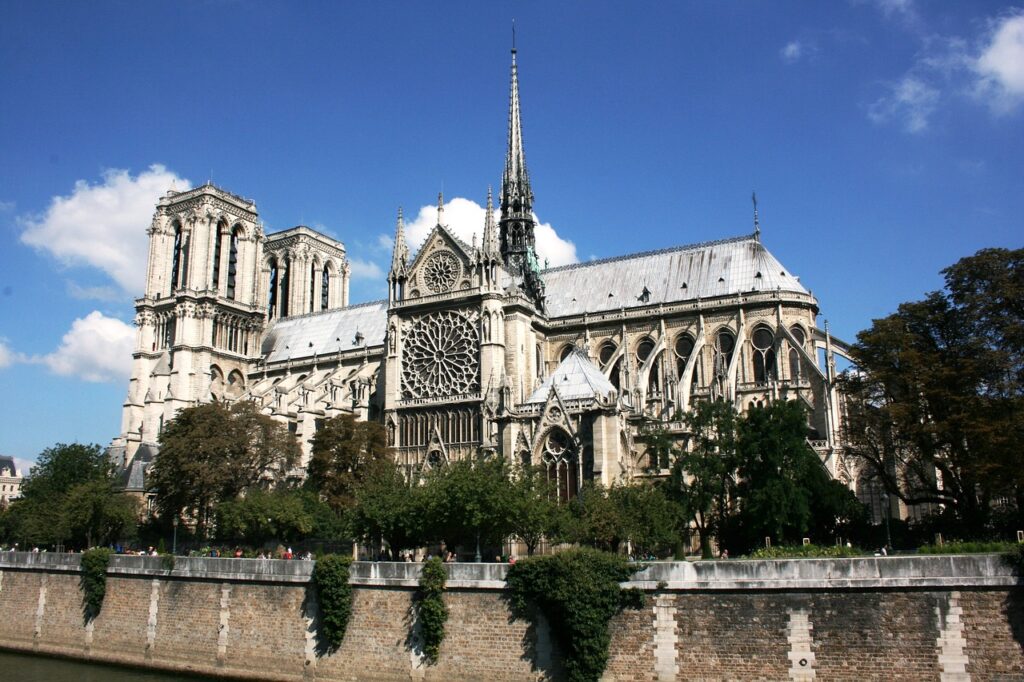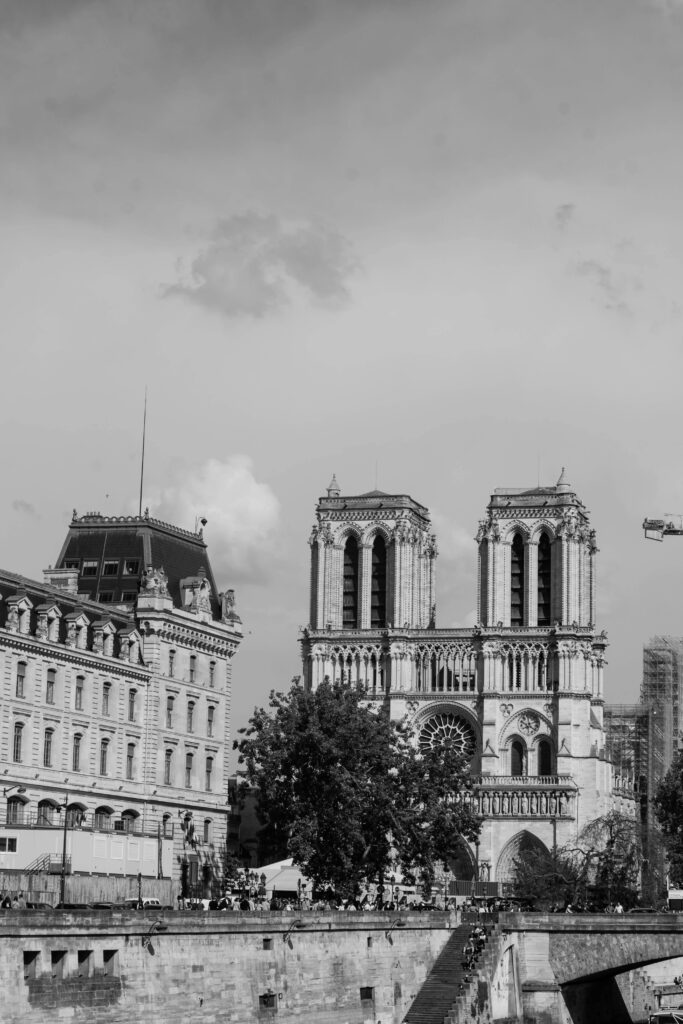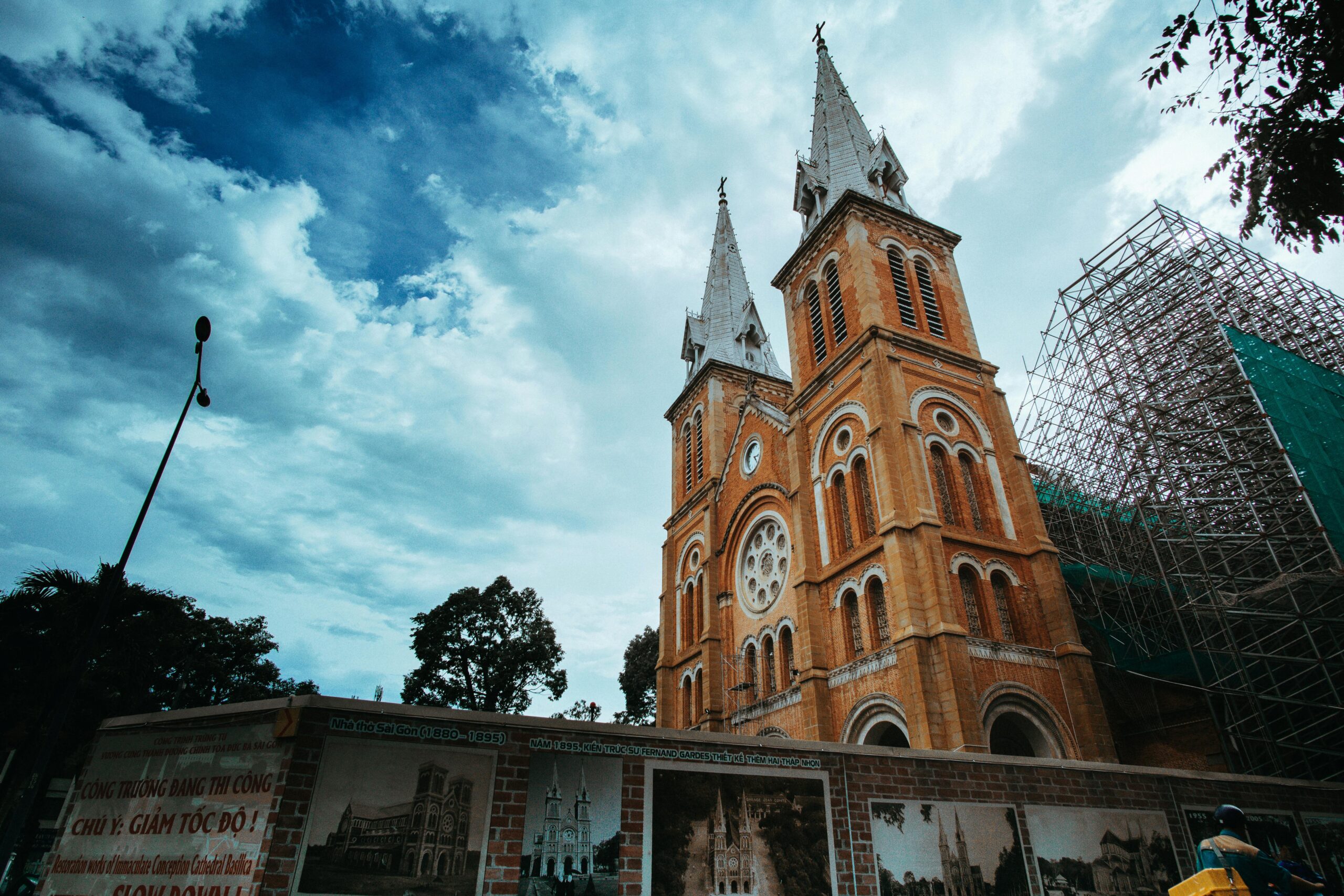The sound of Notre-Dame’s bells echoed across Paris on November 8, 2024, for the first time since the devastating fire that ravaged the iconic cathedral in 2019. The event marked a pivotal moment in Notre-Dame’s ongoing restoration journey, symbolizing the resilience of the French spirit and the collective global effort dedicated to preserving this architectural masterpiece.

A Historic Moment for Paris and the World
On April 15, 2019, the world watched in shock as flames consumed the Notre-Dame Cathedral, one of the most revered Gothic structures and a landmark of Parisian culture and heritage. The fire, which began in the cathedral’s attic, quickly spread, causing the iconic spire to collapse and damaging much of the wooden framework and roof. Miraculously, the main structure, including the twin towers and the precious artifacts inside, survived, thanks to the quick response of emergency services.
For the past five years, a massive restoration project has been underway, attracting support from around the world. The ringing of the cathedral’s bells today, although brief, was a poignant moment of progress—a reminder that Notre-Dame’s full restoration is within sight. French President Emmanuel Macron, along with various religious leaders and hundreds of Parisians, gathered to witness the emotional ceremony.
Restoration Journey: A Global Effort
The Notre-Dame restoration has been one of the most ambitious and challenging reconstruction projects in modern history. As soon as the fire was extinguished, teams of historians, architects, engineers, and craftsmen mobilized to assess the extent of the damage and draft a meticulous restoration plan. The project not only involved preserving the cathedral’s original design but also required updating certain aspects to ensure its structural stability and longevity.
Here are some key aspects of the restoration:
- Rebuilding the Spire: Perhaps the most recognizable part of the cathedral’s architecture, Notre-Dame’s spire was a 19th-century addition designed by architect Eugène Viollet-le-Duc. Plans to reconstruct the spire as faithfully as possible began almost immediately, with artisans using traditional materials and techniques to preserve historical accuracy.
- The Challenge of Lead and Environmental Concerns: The fire released large amounts of lead from the roof into the atmosphere, leading to environmental and health concerns. Special protocols were established to decontaminate the site and ensure the safety of workers and the surrounding community. Throughout the restoration, strict environmental measures were maintained to protect the delicate ecosystem around the cathedral.
- Using Cutting-Edge Technology: Advances in 3D modeling and laser scanning technology allowed preservationists to create detailed digital maps of Notre-Dame’s structure before and after the fire. These digital blueprints provided precise data for artisans working to recreate intricate stone carvings, woodwork, and stained glass designs.
- International Funding and Support: Donations poured in from around the world following the fire, with philanthropists, international organizations, and everyday people contributing to the restoration fund. As of today, hundreds of millions of dollars have been invested in the project, underscoring Notre-Dame’s global significance.
- Stained Glass Windows: Many of Notre-Dame’s historic stained glass windows, including the renowned Rose Window, survived the fire. Specialized artisans carefully removed, cleaned, and repaired the windows to restore their original splendor while keeping them intact for future generations.
The Cultural and Spiritual Impact
Notre-Dame has been more than an architectural treasure; it has served as a cultural and spiritual beacon for centuries. For Parisians, the cathedral is a place of worship, reflection, and celebration, and its survival holds deep personal significance. The cathedral has been a focal point of significant events throughout history, including royal weddings, coronations, and, most recently, memorials for tragic events affecting France.
The bells ringing again is not only a symbol of resilience but also a call for unity in the face of adversity. Religious leaders emphasized the spiritual importance of the moment, reminding the world of Notre-Dame’s role in fostering a sense of community and continuity amid turbulent times.
What’s Next for Notre-Dame?
Though the bells have sounded, signaling a hopeful milestone, the work on Notre-Dame is far from over. The goal is to complete the main structure by April 2025, with ongoing restoration efforts expected to continue beyond that date to address additional architectural needs and enhancements. The dedication to recreating the cathedral’s historical details accurately ensures that it will retain its integrity as a World Heritage site for future generations.
The restoration team is also committed to making Notre-Dame more accessible and visitor-friendly, with enhanced lighting, improved acoustics, and newly integrated visitor pathways. Future visitors will experience the cathedral in all its restored glory while also benefiting from modern amenities that preserve the building’s sacred atmosphere.

Frequently Asked Questions
1. Why did Notre-Dame catch fire?
The exact cause of the fire remains unclear, though it is widely believed to have been an accidental electrical short circuit or an issue with maintenance work. The French government has taken extensive steps to prevent similar accidents by implementing strict safety regulations in restoration efforts.
2. What makes Notre-Dame so significant?
Notre-Dame is a masterpiece of Gothic architecture, a cultural and religious symbol, and a World Heritage site. It is known for its intricate design, stained glass windows, and historic role in French and global history.
3. Will the cathedral look different after the restoration?
The goal of the restoration is to preserve Notre-Dame’s original design as closely as possible. Modern technology aids this process, but traditional materials and techniques are used to ensure authenticity.
4. How much has the restoration cost so far?
As of the latest estimates, the restoration has cost over $1 billion, funded largely through donations from international organizations, governments, and private donors.
5. When will the restoration be complete?
The main restoration work is projected to conclude by April 2025, with additional enhancements continuing afterward to preserve and protect the structure.
6. Can the public visit Notre-Dame now?
Currently, public access to the interior remains restricted due to ongoing construction, but visitors can view the cathedral from outside. Full public access is expected to resume upon project completion.
7. What’s being done to protect Notre-Dame from future damage?
The restoration plan includes improved fire prevention systems, lightning protection, and reinforced structural elements to safeguard against environmental factors and potential hazards.
As Notre-Dame’s bells rang once more, it marked a moment of triumph over tragedy and a step forward in the preservation of world heritage. For millions, the cathedral represents more than just an architectural marvel—it is a testament to resilience, community, and the enduring power of human dedication to art and history.
Sources Aljazeera


